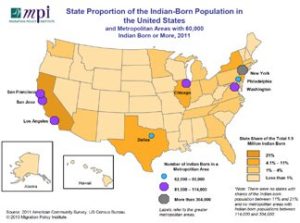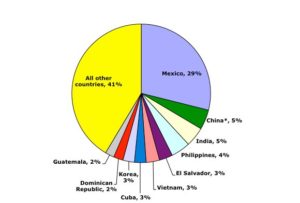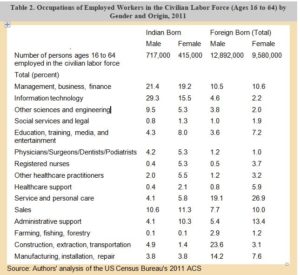The nearly 1.9 million Indian immigrants living in the United States in 2011 represented the third-largest immigrant group by country of origin, behind Mexico and China. The share of Indian immigrants among all foreign born in the United States grew from less than 0.5 percent in 1960 to almost 5 percent in 2011.

As a group, immigrants from India are better educated, more likely to have strong English language skills and arrive on employment-based visas, and are less likely to live below the federal poverty line than the overall foreign-born population. They are also more concentrated in the working ages than immigrants overall, and Indian-born men outnumber Indian-born women. In 2011, India was the second most common country of origin for international students at U.S. institutions of higher learning, behind China.

This article reports on a wide range of characteristics of Indian immigrants residing in the United States, including the population’s size, geographic distribution, admission categories, and demographic and socioeconomic characteristics. Data are from the U.S. Census Bureau’s 2011 American Community Survey (ACS), the 2000 Decennial Census (as well as earlier censuses), and the Department of Homeland Security’s (DHS) Office of Immigration Statistics (OIS) (2012 data).

Retrieved from : Monica Whatley, Jeanne Batalova ( Aug 2013). https://www.migrationpolicy.org/article/indian-immigrants-united-states-0/#2